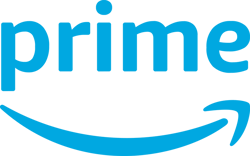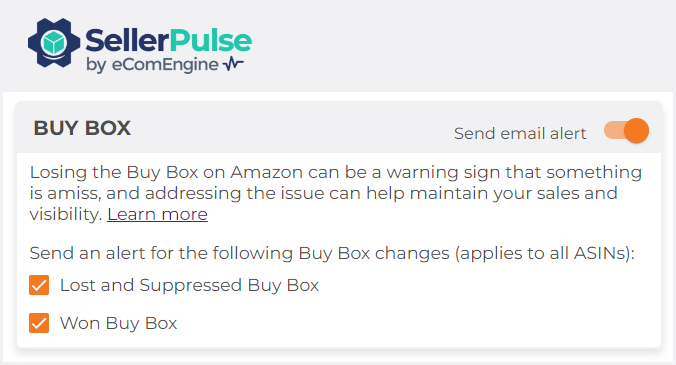Originally published on March 17, 2022, updated February 14, 2024
Menu
Join Our Email List
- Receive our monthly newsletter.
- Stay up to date on Amazon policies.
- Get tips to grow your business.
Amazon sellers have a lot of important decisions to make, and chief among them is how to manage order fulfillment.
Amazon gives its merchants two primary options for handling this process: you can either enroll your products in the Fulfillment by Amazon (FBA) program and pay Amazon to store and ship them on your behalf or ship them out yourself. This is referred to as the Fulfillment by Merchant (FBM) or Merchant Fulfilled Network (MFN) model. For clarity’s sake, we’ll stick with calling it MFN here.
While much has been said about FBA, the Amazon MFN method is still mysterious to many. Let’s take a closer look at this option and also see where Seller-Fulfilled Prime fits into the picture.
First, here’s a quick breakdown of Amazon’s fulfillment models for those of you who aren’t familiar. The main differences between FBA and MFN come down to who will:
With FBA, you or your supplier will send your products directly to Amazon’s warehouses for storage. Amazon then ships orders to your customers and takes care of returns and customer support for you. FBA items are automatically enrolled in the Amazon Prime program and eligible for free two-day shipping to buyers.
For a more in-depth look at the Amazon FBA program, including what products sell the best, packaging requirements, and how to get started, this guide is a great resource. You’ll also learn how RestockPro can help you simplify shipments to Amazon and better manage your FBA inventory to maximize profits.
The MFN model requires you to stock, prep, and ship your products from your own home, business, or warehouse location. You can offset some of these costs by using a third-party logistics (3PL) provider or peer-to-peer (P2P) fulfillment network like Cahoot.
MFN sellers must also manage returns and work directly with customers to resolve any issues that arise.
Your fulfillment method is also a major deciding factor in how much you’ll pay in fees. With the FBA model, you’ll face additional Amazon fulfillment fees, which include per-unit picking and packing fees, monthly inventory storage fees, long-term storage fees, and FBA disposal order fees.
This is on top of Amazon’s core selling fees, which include the cost of your selling plan (a monthly subscription or per-item selling fee) and referral fees you have to pay Amazon in order to sell on its site.
With MFN, you’ll still be subject to Amazon’s core selling fees, but you won’t have to pay the increasingly high fees for storage and fulfillment with Amazon. That being said, you'll still need to pay for inventory storage and order fulfillment in some form or fashion, but the bill is typically lower when you can outsource this or handle it yourself.
Many of the advantages of Amazon MFN revolve around the extra freedom it affords you when you don’t have to follow FBA’s strict packaging and labeling requirements and pay additional fees.
1) You’ll have more control over costs and inventory. As an MFN seller, you can access your inventory at any time and work to drive down many of your costs. This means that MFN margins are often greater. Additionally, you can package and ship your products however you want, opening up more opportunities for branding.
2) You can sell a wider range of products. While many products will flourish under the FBA model, others won’t. Amazon charges FBA sellers more for storing large, oversized items and those that require special handling. Anything with a slow turnover rate will also quickly eat into your budget, as will constantly replenishing small, fast-moving stock. Fulfilling these types of items yourself often makes more sense.
3) You can dropship. Under a drop-shipping business model, your products are shipped directly to the customer from the manufacturer or supplier. Much like FBA, this selling method also takes away the headache of having to store inventory and fulfill orders.
Related reading: Big Changes to the Amazon Order Cancelation Request Process
While there are a number of reasons why Amazon sellers would choose MFN over FBA, there are also some key disadvantages that you need to consider.
 1) You won’t have the Prime badge on your listings. Amazon has more than 200 million Prime members worldwide. These avid customers are known to make larger, more frequent purchases. The Prime badge also holds a lot of weight when it comes to winning the Buy Box, so non-Prime products often have to be priced lower to compete.
1) You won’t have the Prime badge on your listings. Amazon has more than 200 million Prime members worldwide. These avid customers are known to make larger, more frequent purchases. The Prime badge also holds a lot of weight when it comes to winning the Buy Box, so non-Prime products often have to be priced lower to compete.
2) MFN is much more hands-on and demanding of your time. Not everyone is cut out to handle the arduous process of storing inventory, printing shipping labels, getting packages to the carrier, and confirming deliveries day in and day out. Amazon requires you to get orders out quickly and closely monitors your seller metrics. But it’s easy to make mistakes, and late or incorrect shipments will hurt your account health. With your hard-earned product ranking and Buy Box ownership hanging in the balance, this pressure can be too much for some.
Looking for assistance in monitoring your Buy Box activity? eComEngine's Buy Box alerts keep you informed whenever you win or lose the Buy Box. We'll also notify you when a Buy Box that you were previously winning has been suppressed by Amazon.

3) Seller-fulfilled returns are complicated. While MFN sellers are required to manage their own returns, Amazon does have some rules in place to protect the customer experience. US sellers are automatically enrolled in the Prepaid Return Label program, and returns for items that fall under Amazon’s return policy will be authorized automatically. You must refund the customer within two days of receiving the return shipment or the amount will be charged to your account.
With Prime members being so important to your sales potential, the biggest drawback to the Amazon MFN model is probably that missing badge.
There is another way to get it though. Amazon's Seller-Fulfilled Prime program allows qualified MFN sellers to list products with the Prime badge as long as they meet certain criteria.
The Seller Fulfilled Prime requirements are notoriously strict, so this is an option for serious sellers only. Some of them include:
After pausing new enrollments for quite some time, Amazon announced it will begin accepting new sellers into the program in October 2023.
Ultimately, the choice is yours, but you obviously want to do what is best for your business. Amazon MFN can help you save on additional costs, but it comes with a lot of responsibility. FBA is the simpler option logistically speaking, but the fees can be overwhelming.
To maximize your exposure on Amazon and maintain a more cost-effective approach, oftentimes your best bet is to do both. That way, if your FBA offer sells out, you can switch it to MFN while you replenish your Amazon inventory. And as many of you learned during the early days of the COVID-19 pandemic, it pays to have a backup plan. When Amazon’s FBA warehouses put a stop to non-essential shipments, scores of FBA sellers were left in a lurch. Keep all of this in mind as you make your decision and reevaluate your strategy as your business grows.
Originally published on March 17, 2022, updated February 14, 2024
This post is accurate as of the date of publication. Some features and information may have changed due to product updates or Amazon policy changes.
These Stories on Amazon
14321 Winter Breeze Drive
Suite 121 Midlothian, VA 23113
Call us: 800-757-6840





Copyright© 2007-2025 eComEngine, LLC. All Rights Reserved. eComEngine®, FeedbackFive®, RestockPro®, and SellerPulse® are trademarks or registered trademarks of eComEngine, LLC. Amazon's trademark is used under license from Amazon.com, Inc. or its affiliates.
No Comments Yet
Let us know what you think